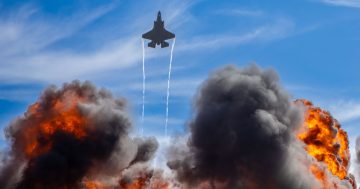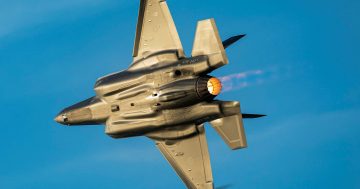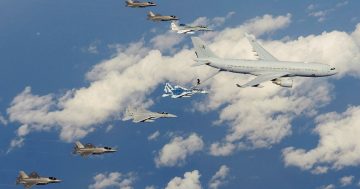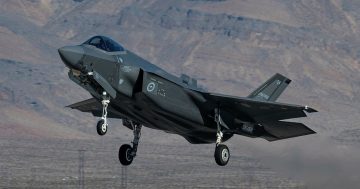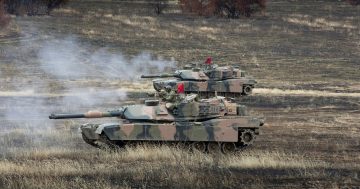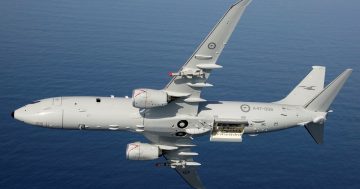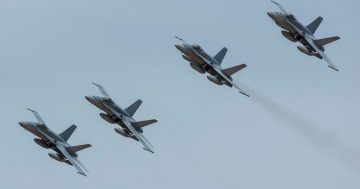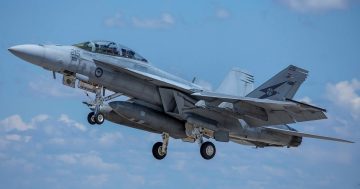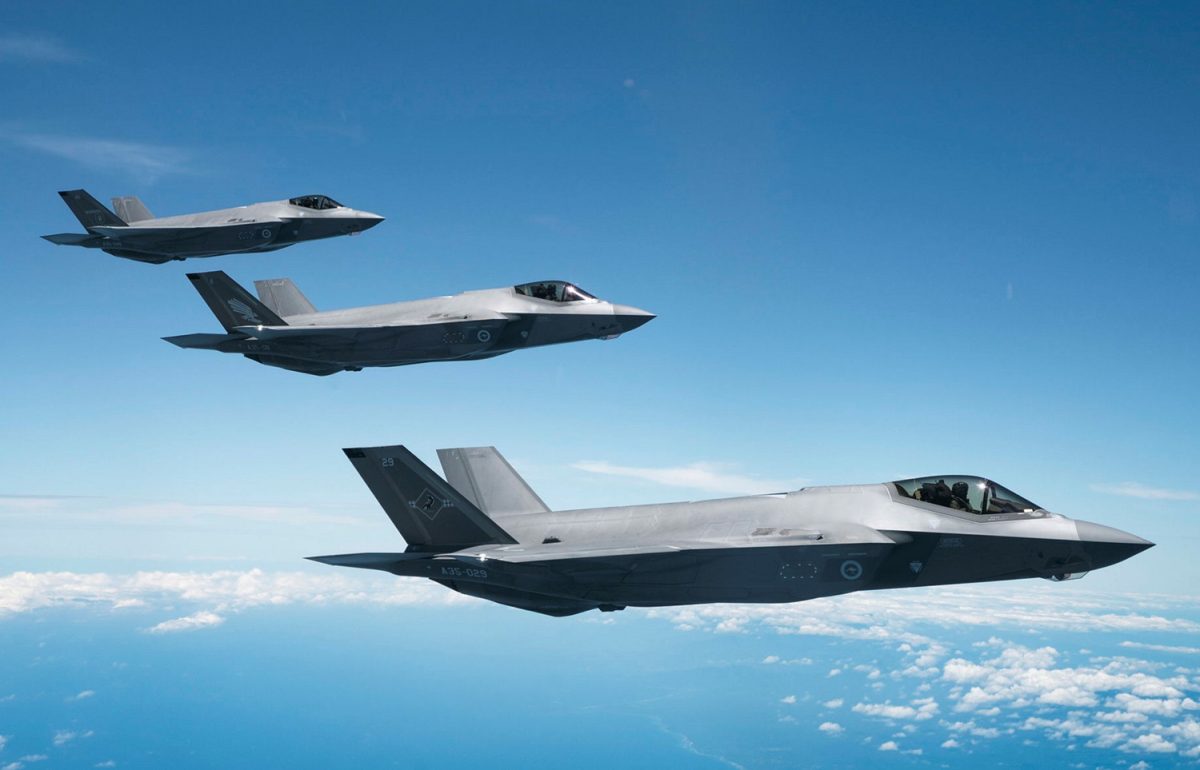
Three RAAF F-35As of No 75 Squadron during a visit to Japan earlier this year. Photo: ADF.
Just when it looked like the multinational F-35 Joint Strike Fighter (JSF) program had left its development troubles behind and was starting to make some headway, the program is facing a potential production shutdown due to delays in its next major upgrade.
The Lockheed Martin F-35 is offered in three different and distinct variants – the F-35A conventional takeoff and landing (CTOL) model as operated by the Royal Australian Air Force (RAAF), the F-35B short takeoff and vertical landing (STOVL) model, and the F-35C aircraft carrier variant (CV).
Australia joined the JSF program as a partner in 2002, and it was planned that 100 F-35As would be acquired to replace the RAAF’s F/A-18A/B Hornet fighters and F-111C strike aircraft. The first RAAF F-35As were to have entered service in 2012, but development delays saw this slip to 2018.
Because of the delays, in 2010 the RAAF bought 24 F/A-18F Super Hornets as a bridging capability until the F-35As entered service. But the Super Hornets will now be upgraded and retained, and have since been joined by 12 similar EA-18G Growler electronic attack aircraft.
As a consequence, and despite predictions – including by this reporter – that additional F-35As would be highlighted in April’s Defence Strategic Review (DSR), it appears Australia’s F-35A order has been capped at 72, of which about 63 have been delivered so far.
An initial operational capability (IOC) of the F-35A wasn’t declared until December 2020, and a Full Operational Capability of all 72 F-35As had been scheduled for December 2023.
Combat aircraft programs of the 1950s and ’60s introduced new and updated models of the same type in separate build batches. But once software became more common on the ”teen series” fourth generation of fighters in the late ’70s and the fifth generation of stealthy fighters of the ’90s and later, upgrades were delivered as software and hardware patches rather than as whole new aircraft.
The F-35 was designed from the outset to be upgraded in ”Blocks”. Block 1 was the initial flight test configuration, Block 2A offered the first operational capabilities and data fusion from the aircraft’s sensors, Block 2B saw the first basic combat capabilities and greater sensor fusion added, and Block 3 the first all-round combat capabilities.
Each new major software Block needs to be hosted on upgraded hardware supplied through a ”Tech Refresh” (TR) upgrade, although there are software and hardware elements of both. In simple terms, Australia’s current F-35As are running Block 3F (for Final) software on TR2 hardware.
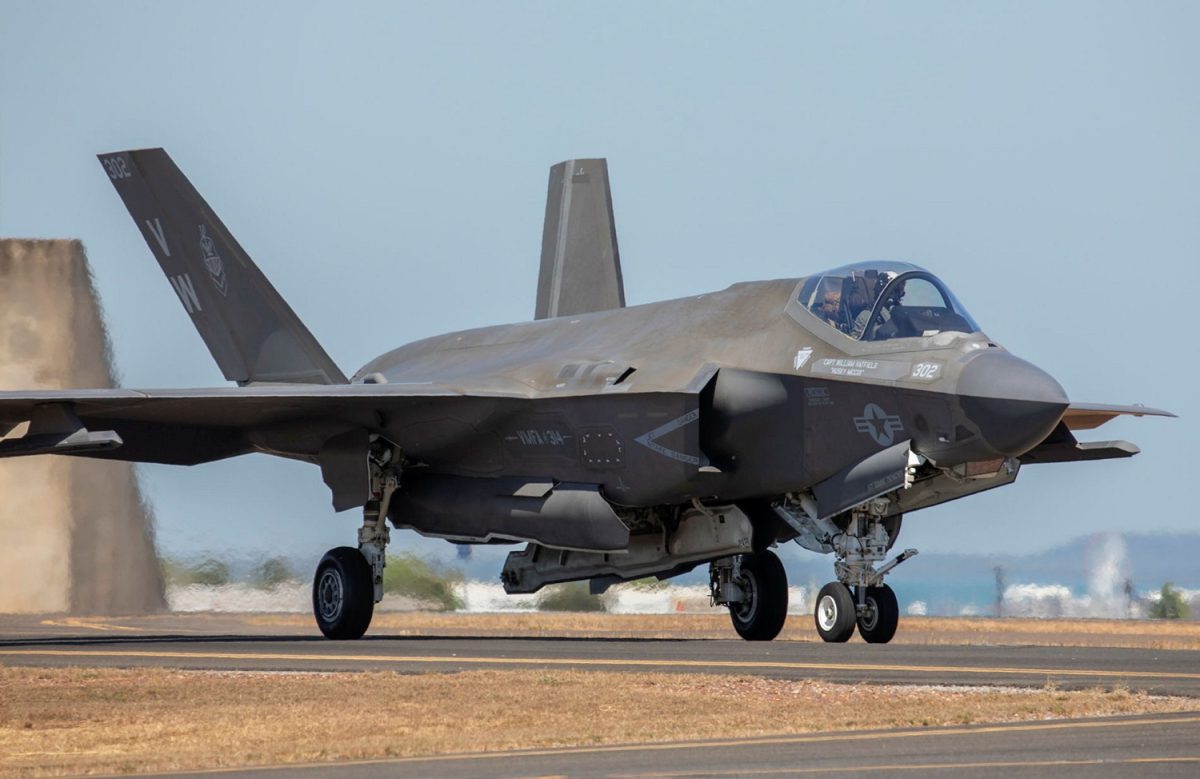
A US Marine Corps F-35B STOVL variant taxis at RAAF Base Darwin in July. Photo: ADF.
To be able to host the next Block 4 upgrade, all F-35 models will be required to undergo a TR3 upgrade with new hardware and software capable of taking advantage of the capability enhancements in Block 4.
And it is here where the program is again becoming unstuck. The planned upgrade has been hit by developmental delays, and this is affecting the deliveries of some jets that have been manufactured with TR3 hardware.
In recent testimony to the US House Armed Services Committee, the F-35 Program Executive Officer (PEO) Lt Gen Michael Schmidt said Block 4 was having “significant issues” with its maturity and integration schedules.
“The F-35 [Joint Program Office – JPO], Lockheed Martin, and other industry partners have identified high-risk concurrency in the F-35 Block 4 schedule, which would threaten to shut down aircraft production if development slips,” he said.
The TR3 design was to have been finished in April 2023, but may now be a year or more late. As a consequence, Lt Gen Schmidt said the completion of F-35s – including the final nine Australian F-35As – at Lockheed Martin’s vast Fort Worth factory, in Texas, has been held up.
One of the problems with Block 4 has been what is known as ”capability creep” – the addition of more capabilities than were originally planned. A recent report in DefenseNews quoted a US Government Accounting Office (GAO) official who said Block 4 was originally meant to have 66 new capabilities by 2026, but this had grown to 80 new capabilities, which may not be complete until 2029.
He also said the program office had set unrealistic expectations on how long it would take to develop the upgrade.
Lt Gen Schmidt said additional ”flight science” or development aircraft were being added to the test fleet, while the Pentagon has ordered a baseline review of the Block 4 development program.
In a story published in The Australian in October, Lockheed Martin’s director of international F-35 business Steve Over described it as a “complicated process”.
“We’re putting the software into flight test; we’re qualifying it, [and] finding things that customers don’t like about the performance or the way things are working and then we’re correcting them and going back to flight test,” he said. “A kind of ‘wash, rinse and repeat’ process.”
The Australian Defence Force has not responded to questions from Region.












